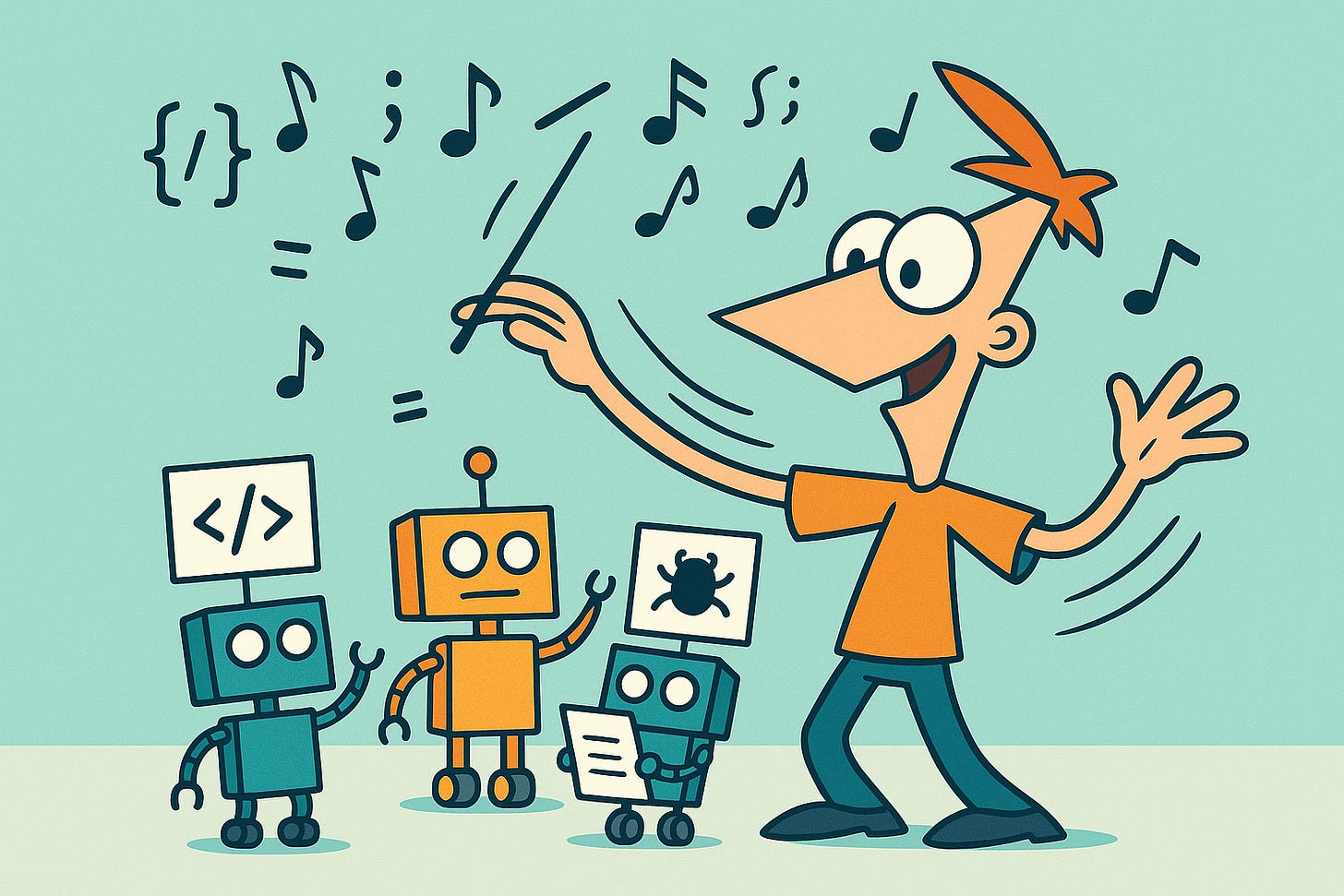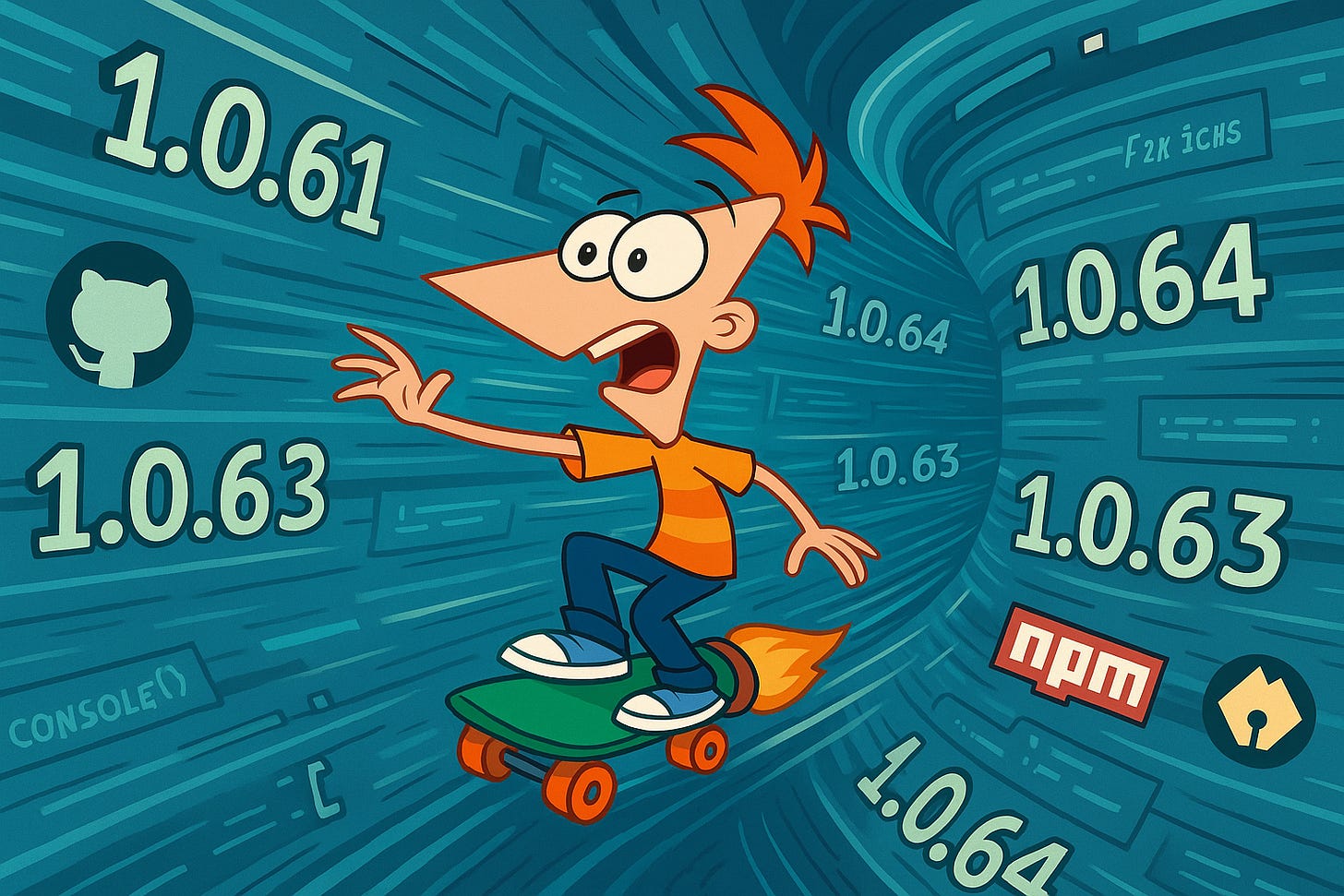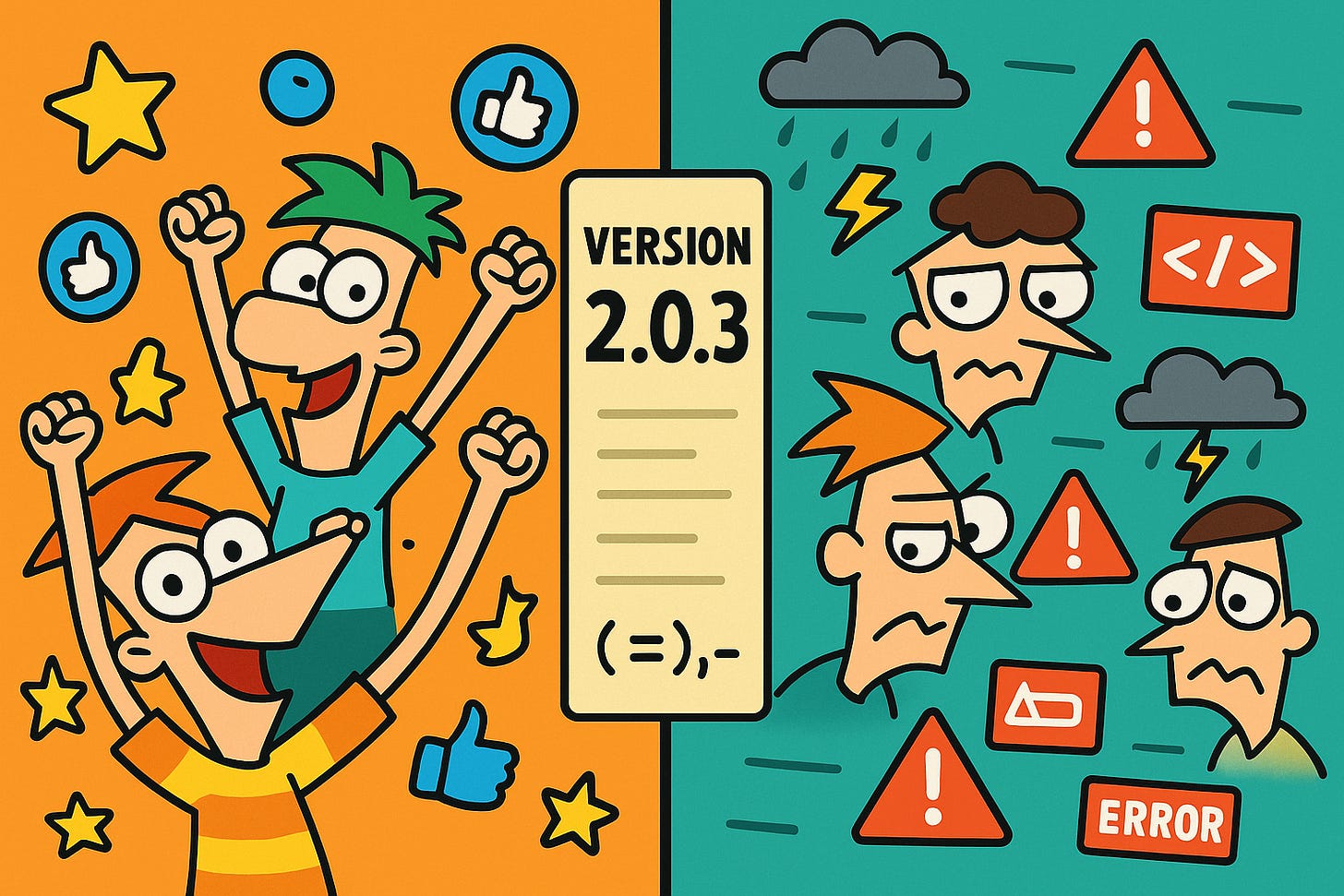Claude Code's journey from version 1.0.60 to 1.0.92 demonstrates something unusual in developer tools—a release cadence so aggressive it shifted both platform capabilities and community workflows in tangible ways. Between late July and August 26, 2025, Anthropic released 32+ versions, sometimes multiple per day, evolving from a terminal-based coding assistant into a multi-agent orchestration platform with documented success rates of 84.8% on software engineering benchmarks.
The result wasn't just technical advancement. It became a case study in how rapid innovation collides with user expectations and operational reality.
The velocity phenomenon: When changelogs become social media
The release pace was extraordinary by any measure. Developer Mark Bissell captured the zeitgeist perfectly when he tweeted: "i refresh the claude code changelog like a twitter feed it updates with similar frequency tbh." Version 1.0.92 appeared on npm just 11 hours after the previous release, exemplifying the relentless pace that characterized this period.
ClaudeLog.com documentation shows versions jumping from 1.0.60 → 1.0.61 → 1.0.62 → 1.0.63 → 1.0.64 → 1.0.65 → 1.0.68 → 1.0.69 → 1.0.70 in rapid succession, often with multiple releases within a single day. The development velocity wasn't chaos—it followed a clear evolutionary arc. Versions 1.0.60-1.0.70 focused on platform stability, particularly solving Windows compatibility issues. The 1.0.70-1.0.80 range introduced user experience enhancements like background commands (Ctrl-b) and customizable status lines. Finally, versions 1.0.80-1.0.92 delivered advanced capabilities including educational output styles and sophisticated agent orchestration.
The rapid iteration reflected Anthropic's unique position: they were simultaneously building the tool and using it internally to build itself. Internal teams reported 50% reduction in incident resolution time, creating a feedback loop that drove daily improvements. The lack of formal GitHub releases—versions were tracked only through npm and CHANGELOG.md—suggested a continuous deployment philosophy prioritizing speed over ceremony.
I'm experiencing this same phenomenon firsthand. My claude-mpm project has followed a similar rapid iteration pattern—using Claude Code to build an orchestration framework, then using that framework to accelerate its own development. When you're using AI tools to build AI tools, the feedback loops create natural pressure for rapid iteration. Every improvement to the orchestration capability enables more sophisticated development of the orchestration itself.
But this velocity created immediate friction with users. A GitHub issue titled "Missing Changelog and Release Notes for Frequent Updates" captured the frustration: "You are releasing new versions of Claude Code like there's no tomorrow - sometimes with notable behavioral changes." The author added a particularly pointed suggestion: "If the release pace is making it hard to keep documentation up to date, maybe let Claude Code handle it - it seems to have the stamina for this kind of sprint."
MCP integration transforms the ecosystem
Model Context Protocol (MCP) integration emerged as Claude Code's standout capability, evolving from basic stdio server support in early versions to OAuth-enabled remote servers by version 1.0.35. This protocol allowed Claude to connect with external tools and services, spawning an ecosystem of 100+ specialized MCP servers ranging from database connectors to business application integrations.
The technical implementation revealed careful engineering. MCP servers could use stdio, SSE, or HTTP transports, with connection pooling for remote servers and configurable timeouts via MCP_TIMEOUT and MCP_TOOL_TIMEOUT environment variables. Performance optimizations included non-blocking server startup to prevent application delays, critical for maintaining the fluid developer experience Claude Code promised.
However, community feedback revealed a persistent bug that tested developer patience: Claude Code sent empty parameter dictionaries {} to MCP servers, breaking all parameterized tools. This issue became a rallying point for frustrated developers who found workarounds by switching to Claude Desktop for MCP-heavy workflows. The bug highlighted the tension between rapid feature development and stability that characterized this period.
Faced with this unprecedented velocity, developers quickly evolved sophisticated coping mechanisms. The Puzzmo engineering team documented maintaining "at least two working trees of every major project" to run Claude on different problems simultaneously. Power users developed a "Start Fresh" approach, with developer Sankalp documenting workflows involving frequent session restarts to avoid context bloat from rapid feature changes.
Developers created targeted solutions: ccusage for real-time token monitoring, Claude-Code-Remote for remote control via Discord, and ClaudeLog.com as a community-maintained changelog when official documentation couldn't keep pace.
Multi-agent orchestration redefines possibilities
The transformation from single-agent to multi-agent architecture between versions 1.0.70 and 1.0.92 represented Claude Code's most significant architectural shift. The system evolved from monolithic interactions to sophisticated orchestrator-worker patterns, where a lead agent could spawn 3-5 specialized subagents working in parallel.
Each subagent maintained independent 200K token context windows (expandable to 1M via API), with specialized tool access patterns and interleaved thinking for adaptive search strategies. Anthropic's research evaluations showed 90% reduction in research task completion time, 4x increase in token utilization efficiency, and a 90.2% improvement over single-agent systems on research evaluations.
The architecture enabled previously challenging workflows. Community reports documented successful refactoring of large codebases and resolution of longstanding bugs, though specific metrics varied by use case.
This resonates with my experience building claude-mpm. The multi-agent orchestration approach has proven essential for complex projects where different aspects—architecture, implementation, testing, documentation—benefit from specialized agent focus. Using Claude Code to coordinate these agents while developing the orchestration framework itself creates recursive improvement cycles.
Technical sophistication extended to memory management. Claude Code implemented a three-tier storage architecture: active working memory for immediate context, compressed summaries for key information retention, and external artifacts for file system storage. This allowed efficient handling of massive codebases while maintaining context coherence across extended sessions.
Despite these technical advances, users frequently hit practical limitations. My own analysis of version 1.0.60 during this period noted that "The version bump looks incremental, but this update fundamentally changes how AI agents coordinate work... Where 1.0.59 burned tokens with brute-force subprocess spawning, 1.0.60 can actually reduce token consumption while running multiple specialized agents."
But this innovation came with real friction. The auto-update mechanism contained buggy commands that could "brick" systems when installed with root permissions, with TechCrunch reporting cases where users needed "rescue instances" to fix broken file permissions.
Platform-specific challenges drive innovation
The version range revealed Claude Code's struggle with platform diversity. Windows compatibility required extensive work through versions 1.0.60-1.0.70, with fixes for native file search, ripgrep functionality, and subprocess management. Linux support expanded to Alpine and musl-based distributions by version 1.0.77. WSL integration proved particularly challenging, with IDE detection and Node.js version management causing persistent issues.
Version 1.0.80 introduced built-in ripgrep as default, a seemingly minor change that significantly improved search performance across platforms. The addition could be disabled with USE_BUILTIN_RIPGREP=0, showing Anthropic's pattern of providing escape hatches for every major change—a philosophy that permeated the tool's design.
Platform-specific optimizations revealed careful attention to developer workflows. macOS received keychain integration for API key storage, Windows got enhanced PATH resolution for executables, and Linux gained native terminal compatibility improvements. Each platform's unique requirements drove features that eventually benefited all users.
The July 2025 breaking point
The rapid development pace and explosive adoption culminated in what the community remembers as the July 2025 crisis. Anthropic suddenly tightened usage limits without warning, sparking immediate backlash. The Hacker News thread "Anthropic tightens usage limits for Claude Code without telling users" captured raw user frustration. One user sarcastically noted: "Vibe limit reached. Gotta start doing some thinking." Another compared it to "Paid compilers and remotely accessible mainframes all over again - people apparently never learn."
Developer Will Brown expressed the broader frustration with a pointed analogy: "imagine if gas stations didn't tell you how many gallons you were getting because car mileage was a trade secret."
The crisis triggered a documented developer exodus. A Reddit user's "Open Letter to Anthropic" described how experienced developers building platforms across "fintech, gaming, media, entertainment, and crypto" who had upgraded to the $200 monthly plan "within 20 minutes of trying Claude Code and became active evangelists for weeks" ultimately abandoned the platform due to service outages, API timeouts, and Claude Code "lying about task completion."
Performance benchmarks throughout this period consistently outpaced competitors. Claude Opus 4 achieved 72.5% success rate on SWE-bench Verified, industry-leading at the time. Terminal-bench scores of 43.2% demonstrated strong performance on terminal-based coding tasks. The 64% problem-solving success rate compared to 38% for the previous Claude 3 Opus generation showed dramatic capability improvements.
Real-world impact matched synthetic benchmarks. Anthropic's internal teams reported 50% reduction in incident resolution time. Community members documented solving bugs that had stumped them for years. One developer with 30+ years of C++ experience had a four-year-old bug resolved by Claude Opus 4, calling it "dramatically superior" to any tool they'd previously used.
Breaking changes and community resilience
The rapid pace brought a cascade of breaking changes that tested developer patience. Version 1.0.70 migrated from .claude.json to settings.json configuration files, forcing users to update their setups. The Bedrock ARN format changed from escaped slashes (%2F) to regular slashes (/), breaking AWS integrations. Debug logging moved from DEBUG=true to ANTHROPIC_LOG=debug, requiring environment variable updates.
From building claude-mpm through this same period, I understand the pressure that drives these changes. When you're using Claude Code to develop orchestration tools, each improvement unlocks new capabilities for the next development cycle. But managing user experience while iterating rapidly requires careful consideration of each breaking change. Every migration path needs clear documentation and transition support.
Tool naming conventions evolved throughout the version range. Legacy names like LSTool became LS, while View transformed into Read. These changes, while improving consistency, forced developers to update custom commands and workflows. The community developed migration scripts and shared them through GitHub, demonstrating collaborative problem-solving.
API evolution proved particularly impactful. The rename from total_cost to total_cost_usd broke cost tracking integrations. JSON output structure changes required updates to parsing logic. Yet each breaking change came with clear migration paths and often improved functionality, suggesting careful consideration despite the rapid pace.
The community's response revealed both frustration and ingenuity. Developers created version-specific workflows, with some maintaining multiple Claude Code installations to handle breaking changes. The widespread use of backup scripts like @backup latest-fixes and @restore latest-fixes became standard practice. The widespread adoption of workarounds like claude --dangerously-skip-permissions to bypass constant permission prompts became a telling indicator of user frustration with the tool's volatility.
Competitive context emerges
The development velocity influenced the entire AI coding assistant market. Users frequently compared Claude Code favorably despite the chaos: "A couple of times I hit the daily limits and decided to try Gemini CLI with the 2.5 pro model as a replacement. That's not even comparable to Claude Code. The frustration with Gemini is just not worth it." (I can confirm this frustration, though Augment Code did save me on more than one occasion.) Another noted: "A lot of people are saying that cursor is much worse than Claude Code who have used both."
According to VentureBeat's reporting, nearly half of Anthropic's $3.1 billion in API revenue stemmed from just two customers—Cursor and GitHub Copilot—generating $1.4 billion combined. Despite developer frustrations, the rapid innovation was driving substantial commercial adoption.
The Builder.io team published detailed guides noting a fundamental workflow shift: "I used to have Claude as a small sidebar while coding in the main editor. Now I default to Claude first and only peek at code when reviewing changes."
Developer resources flourish alongside official updates
The community response to Claude Code's evolution produced a rich ecosystem of resources. ClaudeLog.com emerged as the definitive third-party changelog, tracking every version with more detail than official sources. GitHub repositories like "awesome-claude-code" curated commands, workflows, and tools. Comprehensive community guides appeared documenting advanced usage patterns and troubleshooting approaches.
Stack Overflow filled with solutions to common pain points: permission fatigue (--dangerously-skip-permissions), directory migration issues (manual scripts for encoded paths), and storage space problems (Chrome temp file accumulation). YouTube creators produced tutorials and walkthroughs, while blog posts documented real-world implementation patterns.
Educational content evolved from basic "getting started" guides to sophisticated multi-agent orchestration patterns. The "Explore, Plan, Code" methodology became standard practice. ROADMAP.md files emerged as "central nervous systems" for projects. Hooks systems enabled automated quality pipelines. The community had moved beyond using Claude Code to architecting entire development workflows around it.
The rapid innovation created anxiety among developers about missing features or falling behind on the latest capabilities. One developer lamented discovering basic functionality "after 1 week of usage 😭", highlighting how the pace made it difficult even for active users to stay current.
The paradox of rapid innovation
The community's reaction to Claude Code's development velocity reveals a fundamental tension in modern software development. Developers simultaneously craved the cutting-edge capabilities delivered by rapid iteration while struggling with the instability it created.
Despite the technical excellence, many developers praised the innovations delivered at this velocity. The Puzzmo blog's "6 Weeks of Claude Code" described transformational productivity gains: "I still write code at the same level of quality, but I feel like I have a new freedom of expression which is hard to fully articulate... the ability to instantly create a whole scene instead of going line by line, word by word is incredibly powerful."
However, one particularly frustrated developer posted in Issue #5649: "Claude does EVERYTHING IN ITS POWER to create bugs, wreak havoc on my files, and delete working code... Why release a tool for code coders that is so volatile and destructive?"
A significant regression between versions 1.0.24 and 1.0.61 led one developer to cancel their subscription after "four separate 5-hour sessions on a max-tier subscription trying to guide the agent to a correct solution." Yet the Kean blog quantified 2x productivity improvement with 4,263 lines added and 6,018 lines removed in the first week alone.
This paradox—breakthrough productivity gains coupled with maddening instability—defined the community experience during this extraordinary development sprint.
The Agentic Coder's Take
The evolution from Claude Code 1.0.60 to 1.0.92 offers clear lessons for teams building AI development tools. The MCP protocol provides extensibility but requires careful handling of parameter passing bugs. Multi-agent orchestration delivers dramatic performance improvements but demands sophisticated coordination logic. Platform-specific optimizations are essential but multiply testing requirements.
Building claude-mpm through this same period has given me perspective on both sides of this equation. Rapid iteration with AI tools creates powerful feedback loops—each improvement to your orchestration framework enables more sophisticated development of the framework itself. But you're also experiencing the user pain points firsthand: critical memory leaks that can crash your system, breaking changes, instability, the constant need to adapt workflows.
Most importantly, rapid iteration with strong community engagement can overcome initial rough edges if the underlying capability delivers genuine value. The community's creation of monitoring tools, documentation sites, and workaround strategies demonstrated remarkable resilience and commitment to the platform despite its volatility.
The period also established new cultural touchstones—the idea of a changelog as a social media feed, "Version FOMO" as a genuine developer anxiety, and the acceptance of $100-200 monthly subscriptions for developer tools. As one Hacker News commenter reflected on the broader implications: "Thanks for ruining everything... Congrats, you DDoS'd yourselves into rate limits"—a sardonic acknowledgment that the community's enthusiasm had pushed the platform to its breaking point.
For developers building tools like claude-mpm, this evolution provides clear patterns. Patterns within versions 1.0.60-1.0.92 hint at Claude Code's trajectory. Asynchronous agent coordination appears imminent, moving beyond current synchronous execution limitations. The 1M token context window, currently available only via API, will likely expand to standard plans. Enhanced MCP protocols promise bidirectional communication and improved streaming capabilities.
Claude Code's extraordinary development sprint represents a notable period when the question shifted from "can AI help me code?" to "how can I architect my entire development workflow around AI agents?" The answer, still being written with each daily release, suggests significant changes may be underway in software engineering practice—but also that the path forward requires balancing innovation velocity with the operational stability that professional developers ultimately demand.







Haha love the Phineas and Ferb infographics. 😂 I’m good friend with Dan Povenmire, will forward him this article. This is what our play date with our kids are like when they were young (we were next door neighbors in Pasadena) https://www.tiktok.com/t/ZP8BC1NLS/